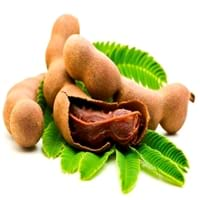Health Benefits
Boosts immune system, Boosts respiratory health, Cancer prevention, Digestive aid, Piles treatment
Cancer prevention, Improves eye vision, Prevents diabetes, Prevents high blood pressure
General Benefits
Beneficial in improving nerve function, Protects against parasites and worms, Relieves pain
Cures inflamed tonsils, Helps in weight loss, Maintains healthy cholesterol level
Skin Benefits
Anti-aging benefits, Brightens and lightens complexion, Exfoliates skin, Hydrates skin, Treatment of dark spots
Anti-aging benefits, Protects skin from oxidative stress
Hair Benefits
Prevents hair loss
Protects hair
Allergy Symptoms
Abdominal pains, Breathing difficulty, Dizziness, Eczema, Fainting, Hives, Itching, Nasal congestion, Swelling of face, Tingling sensation in mouth, Vomiting
Anaphylaxis, Coughing, Diarrhea, Eczema, Hives, Itching sensation in throat, Nausea, Skin Rashes, Runny nose, Sneezing, Swelling of mouth, tongue or lips, Vomiting, Wheezing
Side Effects
Decrease in blood sugar levels, Induces acid reflux, Allergic reaction, Tooth decay, May form gallstones
Heart burn
Best Time to Eat
Along with meal, As a snack in the late afternoon, Don't consume at night and before bed, Strictly avoid empty stomach
Along with meal, As a snack in the late afternoon, Don't consume at night and before bed, Don't eat after meal, Morning time (before lunch)
Vitamin B5 (Pantothenic Acid)
Vitamin C (Ascorbic Acid)
Vitamin K (Phyllochinone)
Calories in Fresh Fruit with Peel
Not Available
Not Available
Calories in Fresh Fruit without Peel
Calories in Frozen Form
Not Available
Calories in Canned Form
Not Available
Type
Tropical
Fruit vegetable
Season
Spring, Summer
All seasons
Varieties
PKM 1, Urigam, Hasanur, Tumkur prathisthan, DTS 1 and Yogeshwari
Tamarillo bold gold, Tamarillo red beau, Tamarillo tango and Tamarillo teds red
Color
Brown, Reddish-brown
Orange, Red, Yellow
Inside Color
Brown
Creamy Yellow
Shape
Curving Cylinder
Round
Taste
Sour-Sweet
Tangy, Tart
Origin
Africa
South Africa
Soil Type
Loam, Sandy, Sandy loam, Well-drained
Sandy loam, Well-drained
Climatic Conditions
Humid to dry, Rainfall, Warm to hot climate
Rainfall, Warm
Facts about
- Tamarind is used to prevent body odor.
- African children use the tamarind seeds in games.
- No cases of tamarind toxicity or allergy reported till date.
- Up until 1967, tamarillos were referred to as tree tomatoes.
- The name tamarillo is derived from Maori word 'tama' which means leadership and rillo from spanish word 'amarillo' which means yellow.
Top Producer
India
New Zealand
Other Countries
Africa, Australia, Brazil, China, Mexico, Nigeria, Sudan, Taiwan
Australia, Chile, Colombia, Malaysia, Peru, Philippines
Top Importer
United States of America
United States of America
Top Exporter
Thailand
New Zealand
Botanical Name
Tamarindus indica
Solanum betaceum
Synonym
Tamarindo, tamarindus
tree tomato, genus Cyphomandra, Cyphomandra
Subkingdom
Tracheobionta
Tracheobionta
Division
Magnoliophyta
Magnoliophyta
Class
Liliopsida
Magnoliopsida
Subclass
Rosidae
Asteridae
Family
Fabaceae
Solanaceae
Species
Tamarindus indica
Solanum betaceum
Generic Group
Tamarind Sub
Nightshade
Compare Tamarind and Tamarillo
It is important compare Tamarind and Tamarillo as both the fruits have a different nutritional value. Their comparison can be done on the basis of their vitamin and mineral content, calories, benefits as well as characteristics, making it easier for us to choose the best fruit for our diet. Their general health benefits are as follows:
Tamarind Benefits: beneficial in improving nerve function, protects against parasites and worms and relieves pain.
Tamarillo Benefits: cures inflamed tonsils, helps in weight loss and maintains healthy cholesterol level.
Fruits are also used as a remedy for various hair problems. The hair benefits of Tamarind are: prevents hair loss and hair benefits of Tamarillo are: protects hair. Some fruits are known to cause allergic reactions. The allergy symptoms of first fruit are: abdominal pains, breathing difficulty, dizziness, eczema, fainting, hives, itching, nasal congestion, swelling of face, tingling sensation in mouth and vomiting and the symptoms of second fruit are: anaphylaxis, coughing, diarrhea, eczema, hives, itching sensation in throat, nausea, skin rashes, runny nose, sneezing, swelling of mouth, tongue or lips, vomiting and wheezing. Get sorted Tamarind vs Tamarillo comparison with the help of fruit comparison tool by fruitvs.com.









